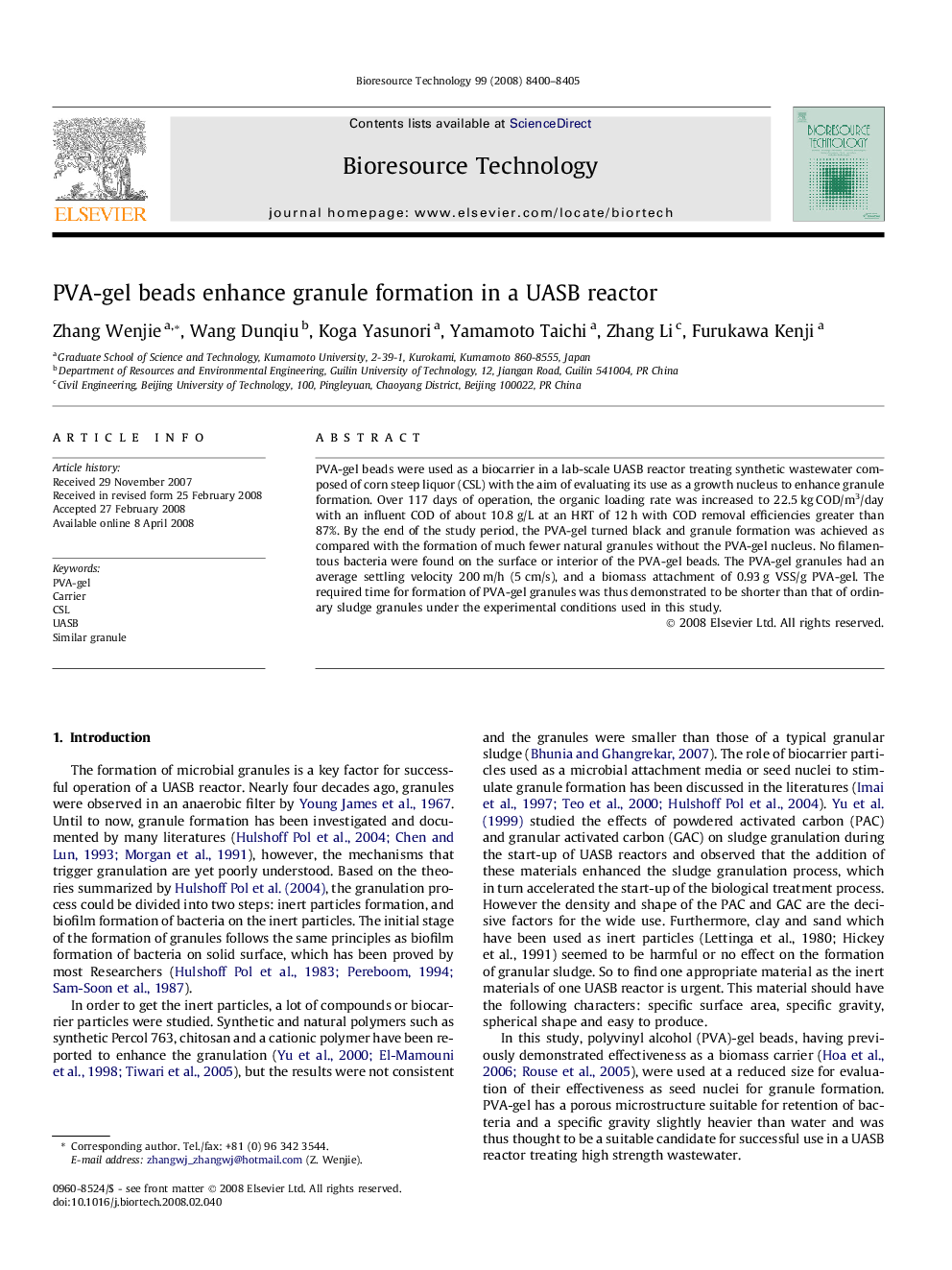| Article ID | Journal | Published Year | Pages | File Type |
|---|---|---|---|---|
| 684584 | Bioresource Technology | 2008 | 6 Pages |
PVA-gel beads were used as a biocarrier in a lab-scale UASB reactor treating synthetic wastewater composed of corn steep liquor (CSL) with the aim of evaluating its use as a growth nucleus to enhance granule formation. Over 117 days of operation, the organic loading rate was increased to 22.5 kg COD/m3/day with an influent COD of about 10.8 g/L at an HRT of 12 h with COD removal efficiencies greater than 87%. By the end of the study period, the PVA-gel turned black and granule formation was achieved as compared with the formation of much fewer natural granules without the PVA-gel nucleus. No filamentous bacteria were found on the surface or interior of the PVA-gel beads. The PVA-gel granules had an average settling velocity 200 m/h (5 cm/s), and a biomass attachment of 0.93 g VSS/g PVA-gel. The required time for formation of PVA-gel granules was thus demonstrated to be shorter than that of ordinary sludge granules under the experimental conditions used in this study.
